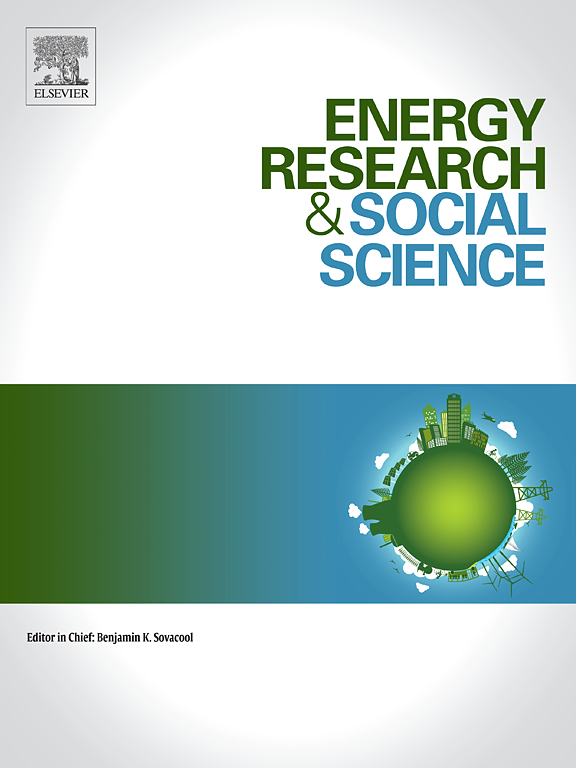关键矿产时代的资源诅咒:地缘政治力量与市场成熟度
IF 7.4
2区 经济学
Q1 ENVIRONMENTAL STUDIES
引用次数: 0
摘要
全球对锂、钴和稀土元素等可再生能源和技术所必需的关键矿物的需求,引起了人们对荷兰病在资源丰富的国家现代卷土重来的担忧。传统模型关注内部因素,如财政能力和制度质量,以解释国家如何管理资源开采的经济影响,但忽略了外部条件,如地缘政治竞争和这些资源交易的特定商品市场的成熟度。本文介绍了一个集成这些外部维度的综合框架,为脱碳上下文中的资源诅咒提供了更细致入微的视角。通过解决与南方大宗商品出口国特别相关的意外收入的供应侧风险,我们正在缩小能源地缘政治辩论中的一个关键知识差距,该辩论主要关注与经合组织和金砖四国经济体担忧相关的需求侧风险,如能源安全和供应链中断。这一论点通过四个案例研究得到证实——印度尼西亚(镍)、智利(铜)、刚果民主共和国(钴)和阿根廷(锂)——这些案例研究举例说明了商品市场成熟度和地缘政治参与的不同组合,并展示了由此产生的各种政策权衡。本文章由计算机程序翻译,如有差异,请以英文原文为准。
Resource curse in the age of critical minerals: Geopolitical forces and market maturity
The global demand for critical minerals—such as lithium, cobalt, and rare earth elements—essential to renewable energy and technology, raises concerns about a modern resurgence of Dutch Disease in resource-rich countries. Traditional models focus on internal factors—such as fiscal capacity and institutional quality—to explain how countries manage the economic effects of resource extraction but overlook external conditions like geopolitical competition and the maturity of the specific commodity markets in which these resources are traded. This article introduces a comprehensive framework that integrates these external dimensions, offering a more nuanced perspective on resource curse in a decarbonization context. By addressing supply-side risks of windfall revenues, that are particularly relevant for commodity exporters of the South, we are closing a critical knowledge gap in the energy geopolitics debate, which predominantly focuses on demand-side risks associated with concerns of OECD and BRIC economies, such as energy security and supply chain disruption. The argument is substantiated through four case studies—Indonesia (nickel), Chile (copper), the Democratic Republic of Congo (cobalt), and Argentina (lithium)—which exemplify distinct combinations of commodity market maturity and geopolitical engagement and demonstrate the varied policy trade-offs that result.
求助全文
通过发布文献求助,成功后即可免费获取论文全文。
去求助
来源期刊

Energy Research & Social Science
ENVIRONMENTAL STUDIES-
CiteScore
14.00
自引率
16.40%
发文量
441
审稿时长
55 days
期刊介绍:
Energy Research & Social Science (ERSS) is a peer-reviewed international journal that publishes original research and review articles examining the relationship between energy systems and society. ERSS covers a range of topics revolving around the intersection of energy technologies, fuels, and resources on one side and social processes and influences - including communities of energy users, people affected by energy production, social institutions, customs, traditions, behaviors, and policies - on the other. Put another way, ERSS investigates the social system surrounding energy technology and hardware. ERSS is relevant for energy practitioners, researchers interested in the social aspects of energy production or use, and policymakers.
Energy Research & Social Science (ERSS) provides an interdisciplinary forum to discuss how social and technical issues related to energy production and consumption interact. Energy production, distribution, and consumption all have both technical and human components, and the latter involves the human causes and consequences of energy-related activities and processes as well as social structures that shape how people interact with energy systems. Energy analysis, therefore, needs to look beyond the dimensions of technology and economics to include these social and human elements.
 求助内容:
求助内容: 应助结果提醒方式:
应助结果提醒方式:


